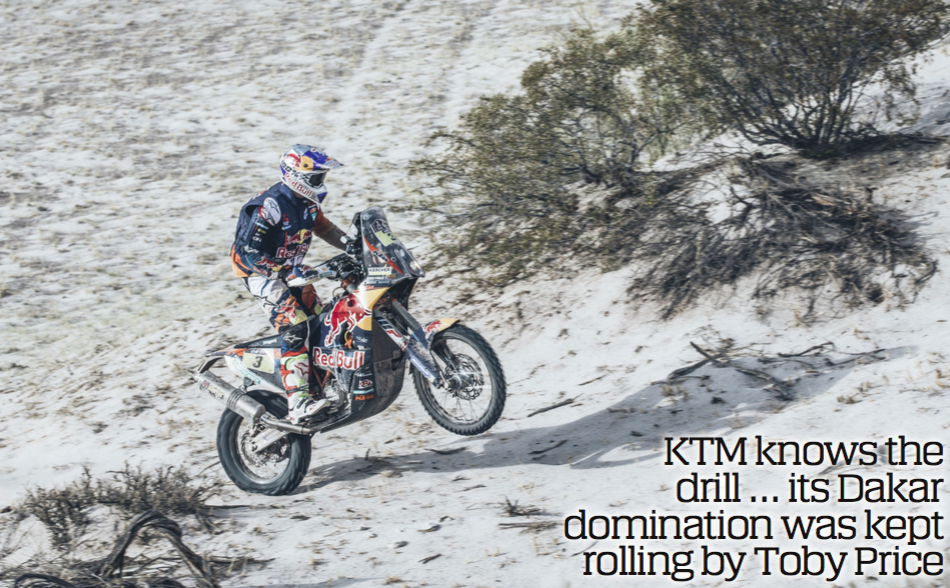KTM is preparing to make MotoGP history, and the master plan includes those trademark orange steel tubes
Passion and ambition run deep at KTM. Those in the big seats have made no secret that winning motorcycling’s most coveted prize – the MotoGP World Championship – is top of their agenda.
And they intend to do it the KTM way. This means dismantling the concepts on which the giants of Japanese motorcycling – Honda, Yamaha and to a lesser extent Suzuki – have relied on to dominate grand prix racing since the early 1980s.
For KTM, aluminium deltabox beam frames are out, steel tubes are in. And suspension will be KTM’s own WP brand, not the Öhlins kit favoured by every other manufacturer.
KTM’s religious zeal in this matter is unshakeable according to Pit Beirer, a former grand prix motocrosser and now Head of Motorsport for KTM.

Pit Beirer and Ajo, Moto3, Dutch MotoGP 2014
“From the beginning of this MotoGP project we made it clear there are some things which cannot be touched and that means the tubular steel frame and WP suspension,” Beirer says.
“This was the warning to the people, engineers and technicians, who joined us: please don’t come and tell us it will be much better with an aluminium frame and another suspension brand. These things are part of the KTM family and we only want people on board who believe that we succeed in our own way.”
It’s a reasonable stance given the success that KTM has had in many different disciplines. Long regarded as the off-road king, based on its domination of the iconic Dakar Rally, KTM recently added the prestigious AMA Supercross Championship to its honour roll.

Bradley Smith, KTMRC16, Sepang MotoGP test, February 2017
In grand prix racing, three Moto3 titles prove that KTM has the expertise and ambition to win on the bitumen as well.
“Many people told us we could not succeed with a tube steel chassis, that we would need an aluminium frame, but in US Supercross we won the championship, as we have in Moto3, plus our success in rally,” Beirer says. “This is why we don’t waste energy thinking about anything else.”
Beirer says KTM’s knowledge of tube steel design and construction plus its high level of in-house expertise and quick turnaround time will provide a key platform for achieving its goals.
All its factory rivals – Honda, Yamaha, Suzuki, Aprilia and Ducati – are committed to the winning formula of the twin-beam aluminium concept.
“We are very confident that we can build our chassis slightly lighter than aluminium frames and on the MotoGP weight limit,” Beirer says. “We use a high-end chromate steel, very light with a very thin wall thickness that allows a smaller frame area for better airflow around the engine.
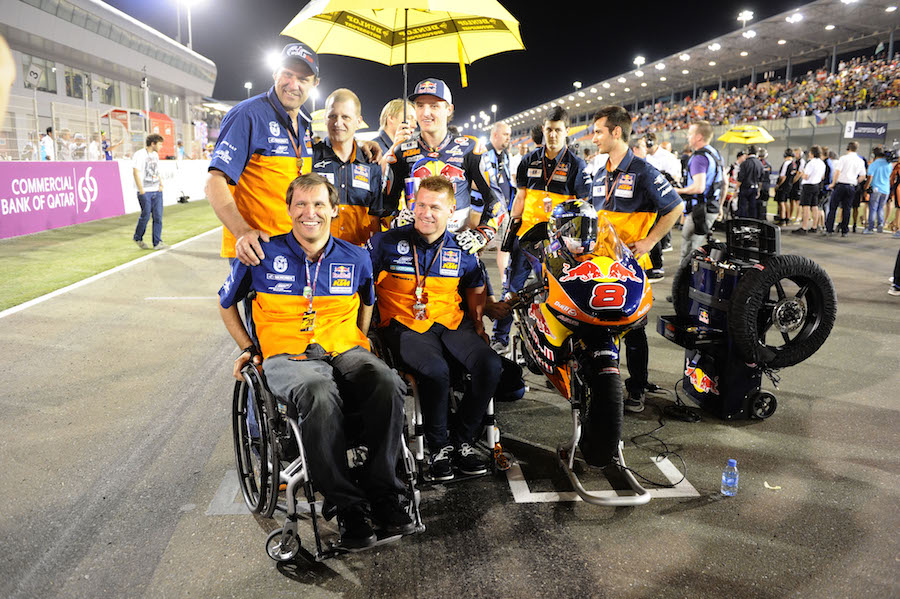
Pit Beirer, Sissis,Qatar Moto3 Race 2014
“We will use our expertise in tube production for very quick reaction times, to transfer the feedback from riders. It is our advantage, not a disadvantage.”
On the engine front, KTM has fallen into line with a V4 – the layout that has been almost universally accepted as optimal, apart from Yamaha’s in-line unit. KTM doesn’t see top speed as an issue; instead, it recognises that corner exit acceleration is now the competitive focus in MotoGP.
“The punch off the bottom is where the engine needs to be stronger, that’s our priority – nice roll-on power for the rider. The top speed is good,” Beirer notes.
And so to the holy grail, the MotoGP World Championship.
KTM’s campaign as an official factory entry begins at the opening race of the 2017 season in Qatar in March with new riders Bradley Smith and Pol Espargaró.
For Qatar, KTM is planning to have a heavily revised bike – upgraded engine, chassis and aerodynamic kit – ready to race after an intense period of testing and development.
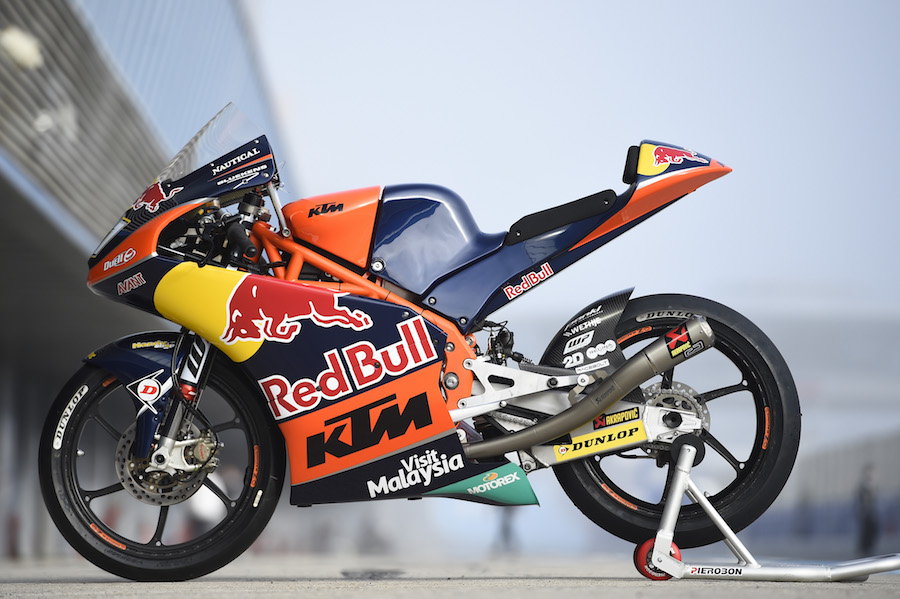
Brad Binder, Bike, KTM, Jerez Moto3 test March 201
Beirer knows that the Qatar race will be the first real benchmark of where KTM stands and its potential for the 2017 season. It may also provide an idea of just how long the road to victory will be.
“In MotoGP now you have to be within one second of the front pace even to be part of the show,” he says. “We have to work hard and work our way up, and it would be a big dream that in our first season we got a top 10 in a race.
“But the results in the first year will not be the most important part of this project. It will be to build a solid base, to show that KTM are serious about this project.
“We know we will have some difficult moments. What will be very important is what level we will be at after three years, not the first year.
Pit mastermind
In the dark days following a career-ending crash in the 2003 Bulgarian Motocross Grand Prix, Pit Beirer never imagined he would one day lead KTM into its ambitious MotoGP project. But that is where the now 44-year-old German finds himself, having been a key player in KTM’s success story in a variety of bike disciplines over the past decade – including AMA Supercross, the Dakar Rally and Moto3.
Now head of motorsport at KTM, Beirer describes himself as “an old-school motocross rider” who formed his own team and won GPs before his racing career ended with the spinal injuries that put him in a wheelchair. The transition to being an office guy and progressing through the management ranks after his 2003 crash required determination, self-confidence and patience. And Beirer will need plenty of those qualities in MotoGP.
While 2017 marks KTM’s first official entry as a factory team in MotoGP, the Austrian company did have a brief taste of the premier class a decade ago. KTM supplied a 990cc V4 engine to Team Roberts, a dalliance that ended acrimoniously after ten races of the 2005 season. KTM also contracted British rider Shane ‘Shakey’ Byrne to ride for Team Roberts, but an uncompetitive motor and the need for a massive spend on R&D for the coming 800cc engine formula saw KTM retreat.
The company kept its road-racing presence with a focus on 125cc and 250cc two-stroke world championships before embracing the 250cc, four-stroke Moto3 concept – going on to win the title three times since 2012. And in parallel with MotoGP in 2017 KTM will enter Moto2, thus giving the company representation in all GP road-racing classes.
Beirer says KTM wants to “provide a pathway” for young riders with the hope of keeping young talent within the KTM structure. KTM’s reigning Moto3 world champion Brad Binder will ride a Honda-powered KTM in Moto2 for the next two seasons. Beirer notes that young guns such as Maverick Viñales and Jack Miller were winners with KTM in Moto3 before moving on to further their careers.
When it came to finding riders to kickstart the MotoGP project, Beirer was pleasantly surprised to grab Bradley Smith and Pol Espargaró from Tech3 Yamaha. Both are young and fresh and eager to embrace the project and understand the steep learning curve and close-knit team atmosphere at KTM. Beirer didn’t want a fading champion who was close to retirement. Smith, 26, was sixth in the 2015 MotoGP championship and is now back from a knee injury that stalled his 2016 campaign. Espargaró, 25, was the 2013 Moto2 champion but is yet to show his full MotoGP potential.
“KTM have big ideas, and they go racing to win and while this is still a very young project I’m here to help show that KTM can do it,” Espargaró said.
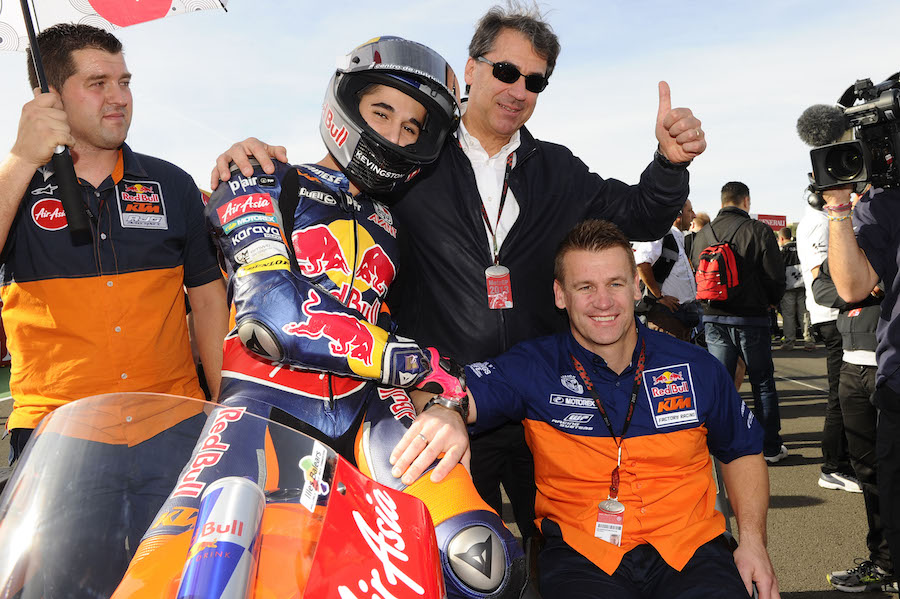
Stefan Pierer, KTM boss, Luis Salom, Pitt Beirer, Valencia Moto3 Race 2013
Orange power
KTM’s fixation on and trust in their iconic steel frame concept is hugely admirable.
But can it take them to the rarefied status of MotoGP world champions – or even MotoGP race winners?
Bullish CEO Stefan Pierer is adamant the premier class title is the goal: “Even if it takes ten years we will not give up.”
This is going to be a massive test of not only engineering excellence but of KTM’s willpower to stay the course with its heritage.
When Ducati arrived in MotoGP with a factory team it bravely declared that the red bike’s steel tube ‘trellis’ frame with the Desmo V4 as a stressed member was untouchable.
In 2007 Ducati won its only MotoGP world championship so far, although that was largely due to the alien talents of Casey Stoner.

Bear, Aki Ajo, Jerez Moto3 Test Feb 2014
Ducati followed with a carbon fibre frame in 2009 and it was only after Stoner’s departure to Honda – and Valentino Rossi’s nightmare winless streak – that Ducati finally caved in and went to the aluminium beam frame.
Now under innovative engineer Gigi Dall’Igna, Ducati is committed to the Japanese style deltabox concept. The red tubes are long gone.
KTM is rightly proud of its success with tube frames in the Dakar, US Supercross and Moto3.
But in MotoGP the orange tubes will be alone and under the intense scrutiny of massive fan and media interest. Comparisons to the entrenched convention of using aluminium beam frames will be inevitable.
If KTM becomes the first factory to win a MotoGP title since Ducati 2007 with a tube frame it will deserve its place in the history books.
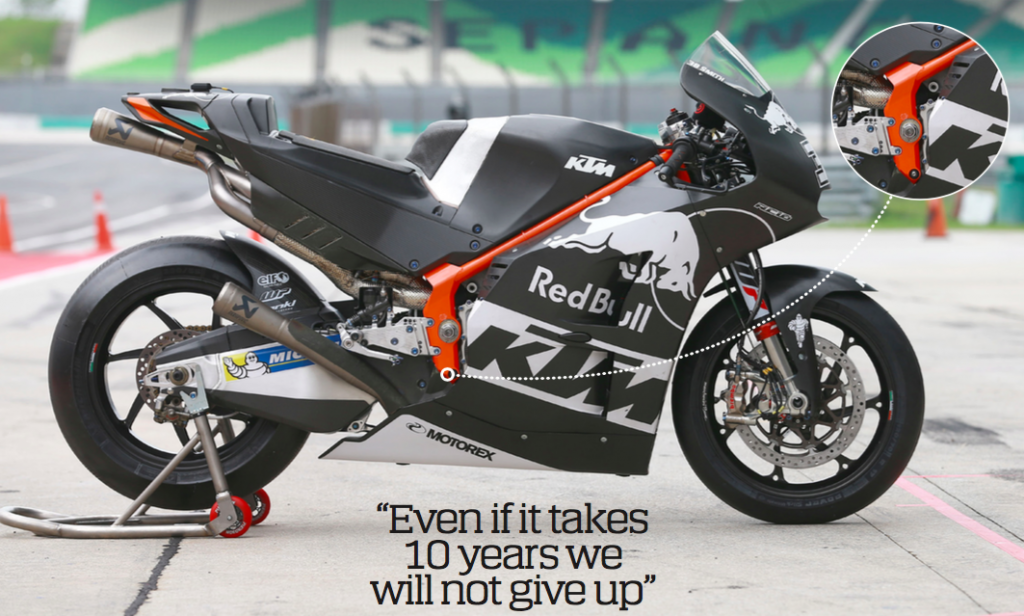
Alien force
KTM boss Stefan Pierer and Red Bull head honcho Dietrich Mateschitz have deep pockets. And they will need them in MotoGP. By the time the KTM is a winning force they may have to fork out upwards of $12 million a season for an alien rider.
Just ask Ducati. Believing that it once again has a bike with world championship potential, the team has gone to the market place to buy the services of Jorge Lorenzo.
Apart from Nicky Hayden (2006), the 16 world championships since 2001 have been won by just four modern era aliens: Valentino Rossi, Casey Stoner, Jorge Lorenzo and Marc Márquez.
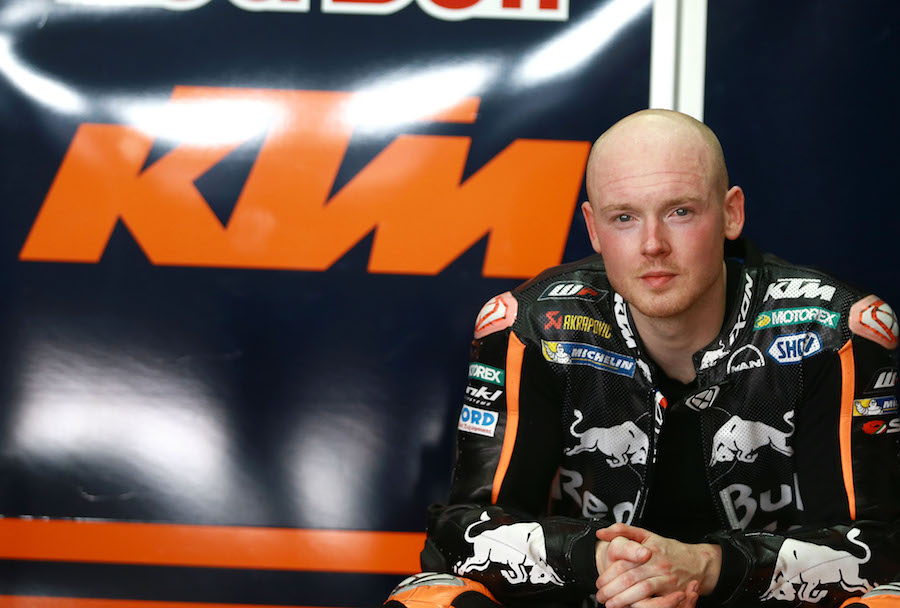
Bradley Smith, KTM, Sepang MotoGP test, February 2017
The tight MotoGP regulations on electronics, tyres and engine spec freeze has made it increasingly difficult for manufacturers to come up with a trick technical advantage.
An alien rider is the key and exactly why Honda, and then Ducati, tried to lure Stoner out of retirement over the past four years.
If KTM looks forward three years, in 2020 Marc Márquez will be just 27 and probably at the peak of his powers. Imagine the bidding war if KTM and Red Bull decide they want to snatch the Spanish speedster from Honda for a serious crack at the championship?
KTM knows the drill. In US Supercross it went to the market to hire multiple champion Ryan Dungey to win, and its Dakar domination was triggered by off-road superstars Marc Coma and Cyril Depres, and more recently kept rolling by Toby Price.
Could the same strategy work in MotoGP?
